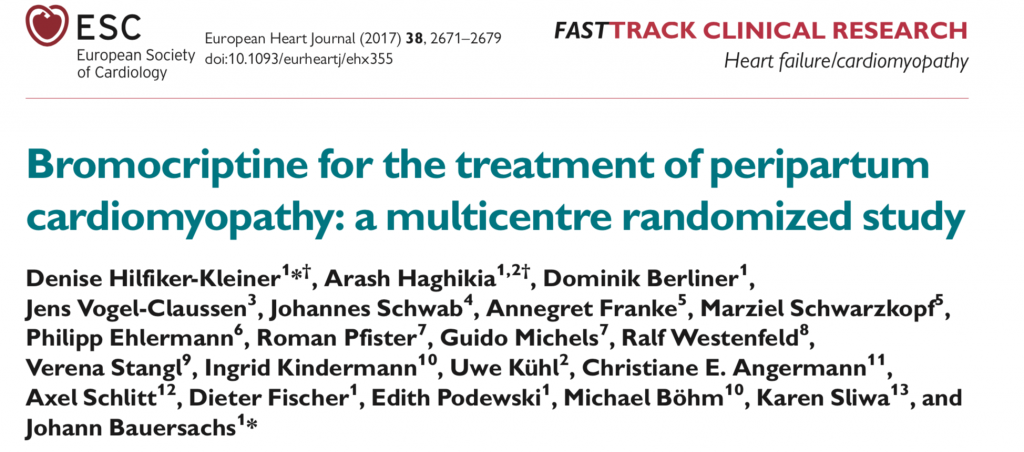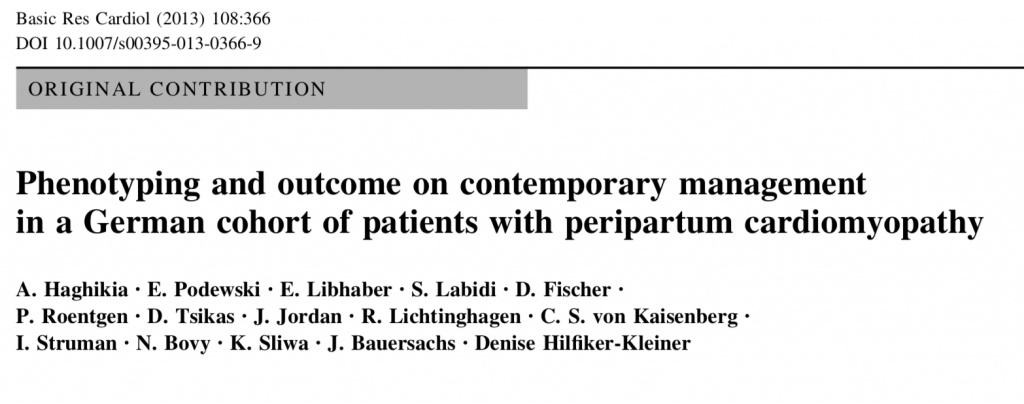Heart failure (HF) is a humungous problem all over the world that carries extraordinary morbidity and mortality. Every doctor has participated in the treatment of an HF patient during training and practice. There was little or no treatment for patients with heart failure with reduced ejection (HFrEF) fraction before the mid nineteen eighties. By definition HFrEF is accompanied by a left ventricle ejection fraction (EF) of less than 40 %. The bedrock of treatment of HFrEF used to be a combination of digoxin and diuretics albeit neither reduced mortality. The aim of treatment continues to be improvement symptoms, raising quality of life and of course cutting down mortality. Mortality was seen to e reduced for the first time in the mid eighties with a combination of hydrazine and isosorbide di nitrate was compared to placebo with the background of digoxin and diuretic therapy. Mortality was reduced from 35% to 25% (an absolute reduction of a solid 10%) by the vasodilator combination therapy in a randomised trial. This was published in 1986 in the NEJM. Soon after a randomised trial comparing enalapril (an ACE inhinitor) with isosorbide di nitrate plus hydralazine reported further reduction in mortality from 25% to 18% approximately. Enalapril 10 mg twice a day became standard treatment for HFrEF patients. There was also significant reduction in hospitalisation for HF.
The era of manipulating neurohormonal modification began with a vengeance because for the first time there was substantial lowering of death in heart failure patients. The next break through came by the Swedes who successfully demonstrated improved symptoms and lower mortality with a beta blocker. It appeared intuitively implausible but a number of randomised trials reported incremental reduction in mortality by adding a beta blocker to a cocktail of an ACE inhibitor, diuretic and digoxin. Bisoprolol, metoprolol and carvedilol clearly were effective in preventing deaths in patients with heart failure. Cardiac societies were advocating an ACE inhibitor and a beta blocker as a class 1 recommendation for patient with HFrEF. Beta blockers reduced death by a relative 35% and an absolute 3% to 4 %.
The third big player was the mineralocorticoid receptor antagonist. The RALES trial with spironolactone concluded that the addition of spironolactone to a combination of an ACE inhibitor and a beta blocker (along with diuretic and digoxin ) brought down mortality from 45% to 35%. The patients of HFrEF patients included in the RALES rial were obviously quite sick, the average EF was less than 30%. Soon eplerenone, another MRA , reduced mortality from 16% to 13% in the EMPHASIS trial that included NYHA class II patients. Cardiac societies therefore strongly recommended that all patients with heart failure be treated with an ACE inhibitor, a beta blocker and an MRA. The recommendation was that treatment be initiated with an ACE inhibitor, if symptoms persisted a beta blocker was to be added. The reverse could be employed too, a beta blocker begun first with addition of an ACE inhibitor in case symptoms persisted. An MRA was indicated in the event of symptoms despite a combination of an ACE inhibitor and a beta blocker. This was the protocol till 2016/2017 when both American and European societies included an ANRI (angiotensin receptor neprilysin inhibitor) and ivabradine in the scheme of things. Both societies recommend that if symptoms persist on a combination of an ACE inhibitor and beta blocker plus an MRA, then if the patient can tolerate an ACE inhibitor or an ARB, an ANRI should be added to the treatment.
The addition of or ‘switching’ to an ANRI is now a class I recommendation based entirely on the randomised PARADIGM heart failure trial that included more than 8400 patients with an EF less than 40%. The combination of valsartan ( angiotensin receptor blocker) and sacubitril ( neprilysin inhibitor) was found to further reduce cardiovascular mortality by 20% in patients already on enalapril (100%), beta blocker (95%) and an MRA (55%). Readmission for heart failure was also significantly reduced by 20%. Hypotension was the only serious problem with ANRI, surprisingly kidney impairment was not greater than placebo.
Sacubitril, a neprilysin inhibitor, prevents the breakdown of natriuretic peptides ( brain natriuretic peptide and N terminal pro brain natriuretic peptide). Sacubitril bt maintaining the natriuretic peptides enhances diuresis and is also capable of vast dilatation. It is also postulated that sacubitril prevents myocardial cell death, reduces inflammation, and mitigates/prevents fibrosis. The ANRI combination counteracts against the sympathetic and renin-angiotensin system.
One should never use an ANRI along with an ACE inhibitor. In fact an ANRI must e used 48 hours stopping an ACE inhibitor. Cardiac societies mention 36 hours but I am more comfortable with a 48 hour curfew. Also an ANRI is not to be used when the GFR is less than 30 ml/min/1.73 m 2. The blood pressure should be more than 90 mm Hg. The drug is not to be used in pregnant women, during lactation. Most important there is no data on the use of an ANRI after an acute myocardial infarction. Liver failure is another no no.
We have restricted ourselves with HFrEF so far, of which 60% of these patients have ischemic heart disease while the remainder have myocardial disease. Recent registry data surprisingly reveals that less than 20% of patients admitted for heart failure in American hospitals are worked up for detection of an ischemic ethology. Less than 2% patients of heart failure undergo a revascularisation procedure.

There is however very little data on what is called peripartum cardiomyopathy( PPCM), both pathogenesis and treatment are yet to be finalised. Peripartum cardiomyopathy by any standards should be considered a deadly disease because of its considerable morbidity and significant contribution to maternal deaths in previously healthy women. The europeans define PPCM as ‘ an idiopathic cardiomyopathy presenting with heart failure secondary to left ventricular systolic dysfunction towards the end of pregnancy or in the months following delivery, where no other cause of heart failure is found. It is a diagnosis of exclusion. The left ventricle may not be dilated but the ejection fraction is almost always reduced below 45%.’
Other causes of heart failure such as pre existing cardiomyopathy, pulmonary embolism, amniotic fluid embolism, and myocardial infarction need to be ruled out. If treated, 50% of women recover ( LV ejection fraction >50% and NYHA class I ), 35% to 40% recover partially ( improvement of EF >10% and at least one NYHA class). African women are particularly susceptible with incidence of 1:100 in Nigeria. The release of prolactin from the pituitary gland in the pathogenesis of PPCM is an exciting topic of research. A combination of increased oxidative stress and high levels of prolactin seem to be behind development of PPCM. Bromocriptine, a semisynthetic ergot alkaloid has been used in prolactinoma, galactorrhea, diabetes type 2, and acromegaly. Bromocriptine blocks prolactin release from the pituitary gland. Data on bromocroptine in PPCM is largely from Germany. The initial reports describing efficacy of bromocriptine were subjected to significant criticism. Persistence with bromocriptine has now produced modest data to give recommendation of its place in treatment of PPCM. Trials with bromocriptine have been quite small. The earliest study included only 20 patients of PPCM but showed bromocriptine treatment given for 8 weeks resulted in fewer deaths, fewer patients in NYHA functional class III and IV and fewer patients with persistent LVEF <35%. Bromocriptine was used in addition to standard heart failure treatment (Circulation 2010, 121:1465-73).
A German registry (Basic Res Cardiol 2013; 2013;108:366) did not find any difference in full recovery of LVEF with bromocroptine but a significantly higher number of patients were classified as improvers in the bromocriptine group (92%) versus no bromocriptine (72%). A prospective German randomised trial (Eur Heart Journal 2017;38:2671) compared a short term regimen (bromocriptine 2.5 mg once day for 7 days) with a long term regimen (2.5 mg of bromocriptine twice a day for 14 days, then 2.5 mg daily for 42 days. A total of 63 patients got randomised; the trial reported that there was no difference in the improvement in LV ejection fraction in the 2 groups of bromocritine (there was no placebo group for ethical reasons). Long term bromocriptine however showed a trend towards more improvement in a sub set of patients with LVEF <30%. The researchers concluded that in addition to standard therapy bromocriptine even when used for just a week is sufficient in m most patients with PPCM.

The spectre of venous and arterial thrombosis looms over bromocriptine treatment in PPCM. It is therefore recommended that anticoagulation be administered along with bromocriptine. The big silver lining in PPCM is that a substantial large number of women go on to recover. Bromocriptine promises to be safe and effective in PPCM patients when added to standard guideline based treatment of heart failure, albeit we must wait for larger randomised trials to confirm the early optimism. After all bromocriptine seems to be the first specific medicine for patients with PPCM.
For now the student could do well to remember that an MBA in heart failure requires administration of a Mineralocorticoid receptor antagonist, Beta Blocker/. Bromocriptine, ACE inhibitor/ Angiotensin receptor blocker and an ANRI.


